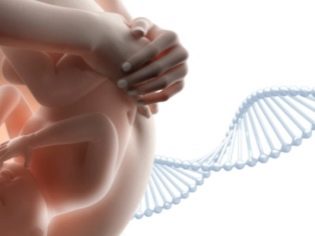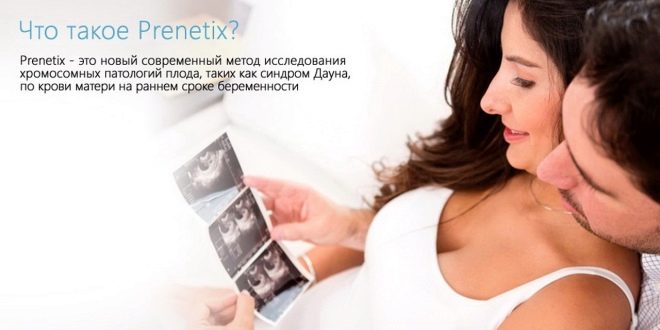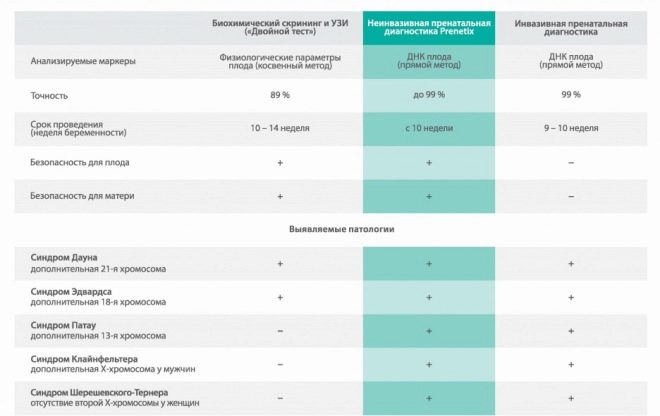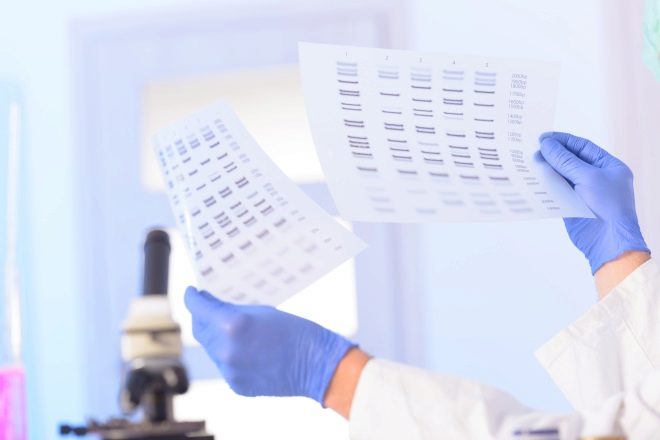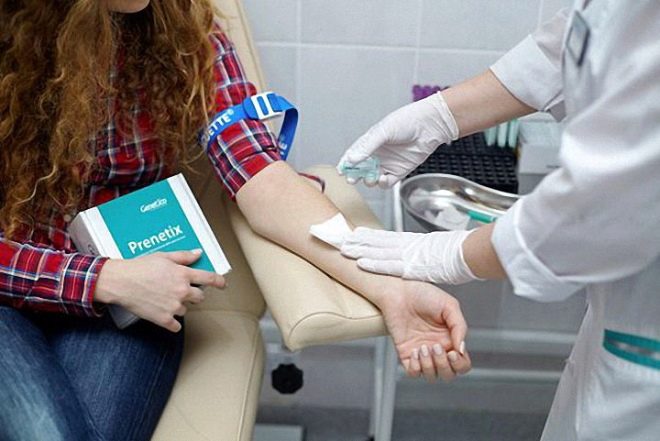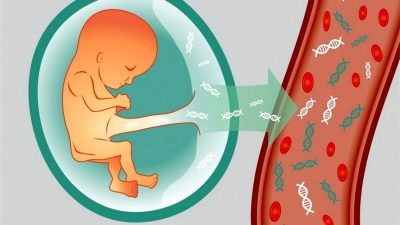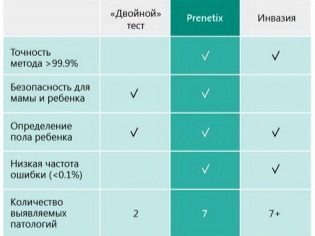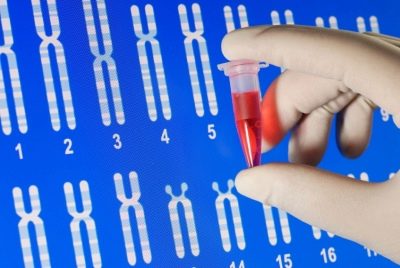Why do Prenetix test during pregnancy and what is the reviews about it?
Prenatal test Prenetix - a new word in prenatal diagnosis. Little is known about him so far, but because women who are shown invasive diagnostics to clarify the health status of their baby, who has not yet been born, simply do not know that there is a safe and accurate alternative. That this test represents itself and how it is carried out, we will tell in this article.
What it is?
All pregnant women are screened in the first, second and third trimesters - a study whose task is to determine how likely the birth of a particular woman is a child with chromosomal pathologies, which include Down syndrome, Turner, Edwards, Patau and other abnormalities caused by an excess or missing chromosome , as well as mutations of some genes.
The accuracy of screening, as is known, leaves much to be desired. Yes, and it is not required from the survey, the purpose of which is only to establish a probability, and not to make a diagnosis. That is why all pregnant women are divided into two groups — those who have small risks to give birth to a sick baby and those who have high risks.
It should be noted right away that a high risk does not mean that a sick crumb will be born, as there is no chance that a woman with a good screening will not give birth to a child with genetic abnormalities.
According to the established practice, women with high risks are sent for consultation to a geneticist. He, in turn, assesses the likelihood of pathology and gives the woman a referral for examination by invasive methods. At the beginning of the second trimester, chorionic villus biopsy is performed, a little later - amniocentesis and cordocentesis. All these methods involve penetration into the "holy of holies" - the cavity of the uterus.
In the abdominal or vaginal wall, a thin and very long needle is punctured under ultrasound and a sample of amniotic fluid with particles of crumbs epithelium or cord blood from the umbilical cord or chorion cells is taken for analysis. The resulting material is studied on the subject of fetal DNA and, with an accuracy of 98-99%, they say whether the child is healthy or sick. Such methods make women fall into a stupor from the fear of pain and possible consequences. And they can be quite dangerous - from infection of the fetal membranes to miscarriage.
All risks are reported to a woman in advance, and she has the opportunity to make a decision herself - to take risks or not. Even a high risk, according to screening data, for example, 1:50, means only that a sick child will be born in one case for 50 births in women with similar results of ultrasound and blood tests for hormones and proteins characteristic of pregnancy. If you think, then the probability is not so great, and invasive procedures can be crippled and, in fact, kill a completely healthy child. The choice is not easy.
Previously, women whose first screening turned out to be bad were recommended to wait until the second one, which is being held in the second trimester. Now offer invasive methods.
Rarely enough, women are told about a safe alternative - non-invasive DNA tests. Prenetix is one of them. In Russia, the test has been used for the past five years.
How is it done?
The test is very simple and does not require any special training from the woman. On the appointed day, you should arrive at the medical genetic center and just take a normal blood test from a vein. The laboratory assistant will take no more than 20 ml of blood. This amount will be enough to divide the blood into layers under laboratory conditions using centrifugation. Then, two genomes will be distinguished in the sample - one maternal, the other - a child.
After the 8th week of pregnancy, the baby's red blood cells begin to enter the mother’s blood. You can do a non-invasive test starting from the 10th week of pregnancy. After isolating the blood cells belonging to the fetus, specialists using the test and its special algorithm Genetico - NGS, deduce the likelihood of the presence of pathology in the child. The analysis is done from 12 to 14 days.
What shows?
The analysis allows to establish with an accuracy of 99% whether the child has the most common genetic abnormalities - such as trisomy 21 - Down syndrome, trisomy 18 - Edwards syndrome, as well as Turner, Klinefelter, Patau syndromes. The test allows you to find out if a child has X chromosomal abnormalities in girls or Y chromosome abnormalities in boys.
Accuracy of the study in clinical conditions was tested more than 13 times, 22 thousand Russian women took part in trials. The number of future mothers who have done such a test all over the world is already more than a million. The accuracy of the study was 98.9%.
If studies are conducted by a woman who is pregnant with twins, only pathologies are determined in 21, 18, and 13 chromosome pairs. But this method is acceptable for pregnant women who used assisted reproductive techniques for conception, in particular, IVF using a donor egg.
Who needs?
Such a test is indicated for women with a burdened genetic history and expectant mothers, whom doctors consider to be at increased risk. Among them:
- pregnant women over 35;
- women who are pregnant from men over 45;
- women who had given birth to a child with chromosomal developmental abnormalities;
- future mothers who had several miscarriages in a row or had a few cases of frozen in early pregnancy;
- women who become pregnant as a result of incest or in a related marriage;
- women, regardless of age and history, if prenatal universal screening showed high risks of having a sick child;
- women who for various reasons (for example, with the threat of miscarriage) can not make an invasive diagnosis.
Contraindications
Prenetix test is not performed in the following cases:
- gestation period is less than 10 weeks;
- there are malignant tumors in the expectant mother;
- there have been organ transplants or blood transfusions in women;
- diagnosed with mosaicism.
Advantages and disadvantages
The undoubted advantage of such a test is the ability to diagnose pathologies in the development of a baby as early as possible. Even if a woman makes a test at 10 weeks, then by the first screening she will already know for sure if everything is in order with the baby. The accuracy of the study allows us to avoid any worries about possible deviations in the less accurate "double" or "triple" test, which are used during the passage of screening diagnostics.
Prenetix test is completely safe for the child and the woman, and this is its main advantage. In addition, it can be used to find out the sex of the baby already in the early stages, and at 10-11 weeks ultrasound will not show him.
Among the minuses are the rather high cost of such an analysis, as well as the fact that The test can not be done at any consultation or clinic.
Only specialized medical genetic centers, which, alas, do not exist in every city in Russia, are engaged in such research. In some cases, in order to get tested, you will have to go to one of the major cities in which such centers exist, for example, to Moscow, Kazan or Samara.
They report the results personally, not by telephone, and therefore they will have to travel again to collect the results of the study.
Despite the fact that the probability of error Prenetix tends to zero, The Ministry of Health of Russia continues to assign the test to the category of screening studies, on the basis of which it is not necessary to make diagnoses. Therefore, when confirming the disease in a child to a woman, in order to terminate a pregnancy for medical reasons for more than 12 weeks, you will have to undergo invasive procedures, the result of which will become the basis for the interruption.
The cost of analysis in different clinics in Russia averages from 23,000 rubles to 55,000 rubles.
Reviews
According to reviews of those women who did the Prenetics test, its results completely coincided with the truth. Even in cases where conventional screening showed high risks, and a non-invasive test gave a low probability, the child was born completely healthy. Some women claim that the analogs of this test - the Panorama or Mattern 21 tests are more sensitive and accurate. In fact, the accuracy of all three tests is approximately the same.
The survey was not widely used in Russia due to the high cost of analysis: women who would like to do a test cannot always afford it for financial reasons. In addition, according to expectant mothers, there is not enough information in the public domain about Prenetix, and in the antenatal clinic, doctors are in no hurry to inform patients about new medical research.
The rest of the pregnant were satisfied. Results are accurate and fast.
See why the non-invasive prenatal genetic test Prenetix is done in the next video.


